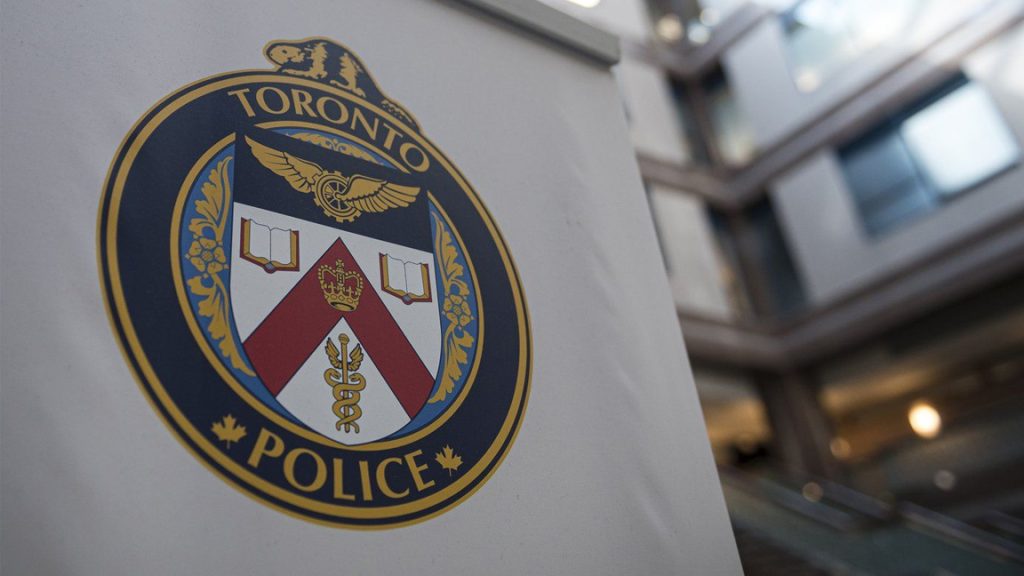Incidence of hate crime in Toronto up 8% in 2016: police
Posted March 17, 2017 5:27 pm.
Last Updated March 18, 2017 8:35 am.
This article is more than 5 years old.
Reported hate crimes are on the rise according to a detailed report released by Toronto police.
The report shows hate crimes increased by eight per cent last year, from 134 incidents to 145 in 2016.
Crimes motivated by religion accounted for 46 per cent of the incidents reported — the highest in the last 10 years — followed by race at 18 per cent and sexual orientation at 12 per cent.
The city’s Jewish community was targeted the most, accounting for 30 per cent of reported attacks, followed by the LGBTQ, black and Muslim communities.

“I don’t think that we have a firm answer on why hate crimes that target religious groups seem to be the most targeted for 2016,” said police spokeswoman Meaghan Gray.
“I think we look at a number of factors when trying to evaluate the trends that occur with hate crimes, whether those are international incidents that are happening all over the world or whether its local incidents that are happening.”
The downtown core is one of the hotspots for hate crimes, with 22 reported incidents in 52 Division, which encompasses Bloor Street to the north, Spadina Avenue to the west, Yonge Street to the east and down to the lake. The northwest corner of the city within 31 Division (Humber River to the west, Steeles Avenue to the north, CN railway to the east and Highway 401 to the south) is another hotspot, with 20 reported incidents.
Police say the suspects behind the attacks are predominantly male between the ages of 18 and 40.
The three most reported criminal offences motivated by hate were mischief to property, assault and criminal harassment. The Jewish community saw the most cases of vandalism; physical assaults happen more often in the LGBTQ community; while the Muslim community was the most victimized group for criminal harassment.
Even though police investigated every report, only 11 arrests were made, which is down significantly from 2015 when 19 charges were laid.
“Even though those arrest numbers may be down a little bit from 2015, it doesn’t mean that those cases won’t continue to be investigated and the potential for arrests does exist,” explained Gray.
Criminal lawyer John Struthers isn’t surprised by the numbers, saying the hate crimes, such as assaults, that play out in the public are much easier to bring to justice than cases of harassment and vandalism.
“Whether or not there is actual evidence is the question in every case because these can be late-night crime cowards, not spray-painting someone’s door with people watching,” he said.
The full report will be presented to the Toronto Police Services Board next Thursday.
Report Highlights:
Mischief to Property
Mischief to property represented a significant portion of the offences, accounting for 74 of the 145 occurrences. In comparison to 2015, there was an increase in the number of mischief to property occurrences motivated by hate/bias. In 2015, 65 of the 134 occurrences were mischief to property motivated by hate/bias. The total proportion of mischief to property occurrences to all reported occurrences increased from approximately 49 per cent in 2015 to approximately 51 per cent in 2016.
Vandalism and graffiti were the two primary forms of mischief perpetrated by the offender. The most common locations were schools, dwellings, street, business/retail buildings and public transportation. The hate/bias categories most targeted were religion, race and sexual orientation. The Jewish community and the LGBTQ community were the predominant victim groups for mischief occurrences in 2016.
Assault
There were a total of 36 assault occurrences in 2016 compared to 29 in 2015. The total proportion of assault occurrences to all reported occurrences increased from 22 per cent in 2015 to 25 per cent in 2016. The hate/bias categories that were targeted the most were the sexual orientation, race, and religion. The LGBTQ community was the predominant victim group for assaults in 2016.
Criminal Harassment
There were a total of 15 criminal harassment occurrences motivated by hate/bias in 2016 compared to 19 in 2015. Religion and race were the highest reported motivation factors for this offence.
Click here to read the full report.










